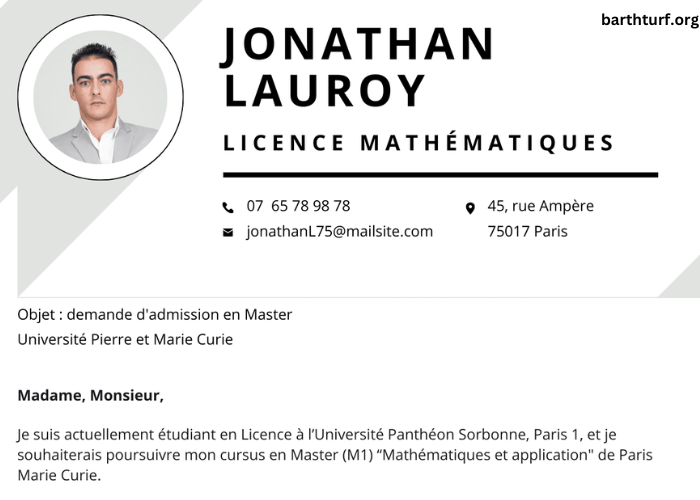In the competitive landscape of job applications, a well-crafted cover letter—often referred to as a motivation letter—can be the differentiating factor that sets candidates apart. While resumes provide a snapshot of your skills and experiences, cover letters allow you to convey your personality, passion, and motivation for the position you are applying for. This article delves into the nuances of writing an effective cover letter, exploring its purpose, structure, and essential elements that can enhance your chances of landing an interview.
Understanding the Purpose of a Cover Letter
A cover letter serves multiple purposes in the job application process. Primarily, it introduces you to the hiring manager and provides context for your resume. This is your opportunity to explain why you are interested in the position and how your experiences make you a suitable candidate. A well-written cover letter complements your resume by highlighting specific achievements and skills relevant to the job.
Additionally, a cover letter allows you to express your enthusiasm for the company and the role. Employers seek candidates who are genuinely interested in their organization and its mission. By conveying your excitement about the opportunity, you demonstrate your commitment and willingness to contribute positively to the team.
Moreover, a cover letter can help you address any gaps or unique aspects of your background that may require clarification. For instance, if you are changing industries or have periods of unemployment, a cover letter gives you the space to explain these circumstances in a positive light.
Key Components of a Successful Cover Letter
To create a compelling cover letter, it is essential to understand its structure and the key components that should be included. A well-organized cover letter typically consists of several sections:
- Header: Begin with your contact information at the top, followed by the date and the employer’s contact information. This formal structure is essential for maintaining professionalism.
- Salutation: Address the hiring manager by name if possible. A personalized greeting shows that you have done your research and are genuinely interested in the position.
- Introduction: Start with a strong opening statement that captures the reader’s attention. Mention the position you are applying for and briefly explain why you are a good fit. This is your chance to make a memorable first impression.
- Body Paragraphs: The body of your cover letter should consist of one or two paragraphs detailing your qualifications and experiences. Use specific examples to illustrate how your skills align with the requirements of the position. Focus on achievements that demonstrate your value and potential contributions to the company.
- Conclusion: Conclude by reiterating your enthusiasm for the role and the company. Express your desire for an interview and thank the hiring manager for considering your application. A polite and confident closing leaves a positive impression.
- Signature: If you are sending a hard copy, include a handwritten signature above your typed name. For electronic submissions, a simple typed name suffices.
Tailoring Your Cover Letter to the Job
One of the most critical aspects of writing an effective cover letter is tailoring it to the specific job and company. Generic cover letters are easily recognized and often overlooked by hiring managers. Take the time to research the company, its culture, and the role you are applying for. Incorporate specific details that demonstrate your knowledge and genuine interest in the organization.
When tailoring your cover letter, refer to the job description and identify key skills and qualifications the employer seeks. Highlight experiences from your background that directly relate to these requirements. For example, if the job emphasizes teamwork and collaboration, include an example from your previous work where you successfully worked within a team to achieve a common goal.
Additionally, reflect the company’s values and mission in your cover letter. If a company prides itself on innovation, you might want to mention your experience in creative problem-solving. This alignment shows the employer that you are not only qualified but also a good cultural fit for their organization.
Writing Style and Tone
The style and tone of your cover letter play a crucial role in how it is received. Aim for a professional yet approachable tone. Use clear and concise language, avoiding jargon and overly complex sentences. Your cover letter should be easy to read and understand, ensuring that the hiring manager can quickly grasp your qualifications and motivation.
While professionalism is essential, don’t hesitate to let your personality shine through. A cover letter is an opportunity to showcase who you are beyond your resume. Consider sharing a brief personal anecdote or insight that reflects your passion for the field or the specific role you are applying for. This human element can help you connect with the reader on a deeper level.
Common Mistakes to Avoid
Even the most talented writers can fall prey to common mistakes when crafting a cover letter. Being aware of these pitfalls can help you create a polished and effective document.
One frequent mistake is being too verbose. A cover letter should typically be one page in length. Employers often have limited time to review applications, so being concise and to the point is crucial. Focus on quality over quantity; only include information that is directly relevant to the position.
Another common error is failing to proofread. Spelling and grammatical mistakes can undermine your credibility and professionalism. Always take the time to review your cover letter for errors before submitting it. Consider asking a trusted friend or mentor to review it as well, as a fresh set of eyes can catch mistakes you may have overlooked.
Additionally, avoid repeating information from your resume verbatim. Your cover letter should complement your resume by providing additional context and insights rather than duplicating what is already stated.
Leveraging Networking Opportunities
In today’s job market, networking can significantly enhance your chances of landing an interview. If you have connections within the company or industry, consider reaching out to them for insights or recommendations. Mentioning a mutual connection in your cover letter can also strengthen your application.
When networking, be genuine and express your interest in learning more about the company or role. People are often willing to help, and building relationships can lead to valuable information about job openings and company culture.
Following Up After Submission
Once you have submitted your cover letter and application, consider following up to express your continued interest. A brief email or message thanking the hiring manager for their time and reiterating your enthusiasm for the position can leave a lasting impression. Timing is essential, so wait about a week or two after submission to follow up.
In your follow-up, keep it brief and professional. Express appreciation for their consideration and inquire about the status of your application. This not only shows initiative but also reinforces your genuine interest in the role.
Conclusion
Writing an effective cover letter is a critical component of the job application process. A well-crafted letter allows you to showcase your personality, enthusiasm, and suitability for the position, helping you stand out in a competitive field. By understanding the purpose of a cover letter, tailoring it to the specific job, and avoiding common mistakes, you can create a compelling narrative that resonates with hiring managers.
Remember that your cover letter is an opportunity to convey your unique story and make a lasting impression. With careful attention to detail, a professional yet approachable tone, and a focus on aligning your skills with the job requirements, you can significantly enhance your chances of securing an interview and advancing your career. Embrace the art of writing a cover letter as a powerful tool in your job search journey, and let your passion shine through every word.



